Intel Developer Forum Spring 2002 - Day 4
by Anand Lal Shimpi on February 28, 2002 11:52 PM EST- Posted in
- Trade Shows
Connecting LCDs with Fiber
One of the biggest problems with notebook displays is that the connection between the graphics chip and the LCD display is made using a custom made copper connector. These custom connectors have relatively large cable widths of around 1" at least and are not very flexible at all; they can usually be bent along one axis but try to do it along the other and you'll be looking for a replacement real soon. Since these cables are custom made for each laptop design it's not as easy to replace as a VGA or DVI cable on your PC since the length and layout of each cable varies from one notebook to the next.
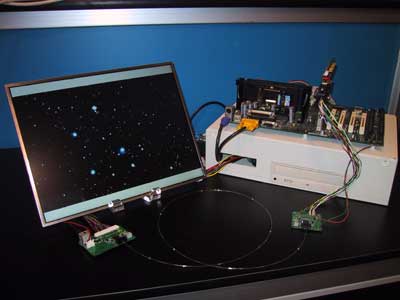
The plastic cabling you see here is all that is necessary to transmit a high-bandwidth
video signal from GPU to display
A company called Photonage has developed a solution to this problem - developing a fiber optic cabling standard instead of the proprietary copper connections that are used today.
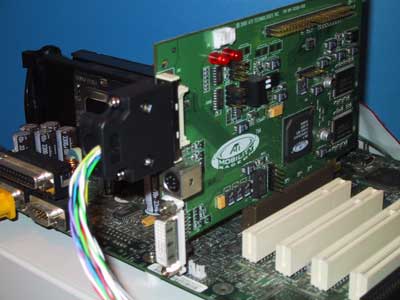
For demonstration purposes a desktop Pentium III system was used with an ATI Mobility Radeon AGP adapter card. Plugged into the DVI connector was a custom adapter that wouldn't normally be used since there are no DVI connectors inside your laptop.
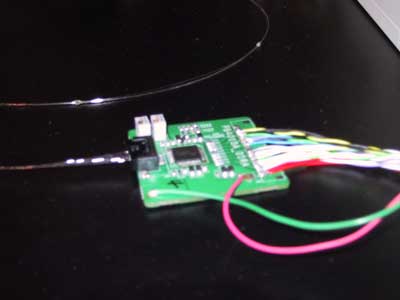
The signal is then sent to this chip and is outputted through this plastic fiber optic cable. The actual implementation of this technology will be barely any larger than the IC in the center of the above PCB.
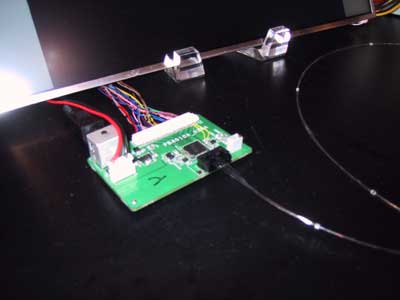
Here the signal enters the LCD display.
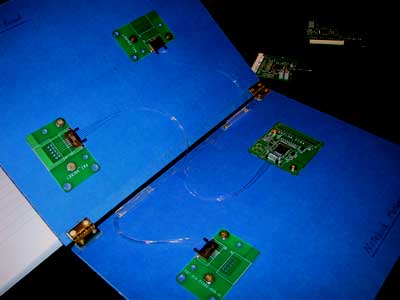
One of the benefits of this connection is durability and ease of routing. This should allow for much greater flexibility by notebook vendors to design even more unique laptops. Intel has officially supported this technology as what they're encouraging notebook manufacturers to use in the future.










1 Comments
View All Comments
Dr AB - Monday, May 11, 2020 - link
Its 2020 and here we are, my laptop's display uses a copper wire and guess what got damaged because of the poorly built hinge mechanism. It's sad that even today that old crappy technology is still in use.